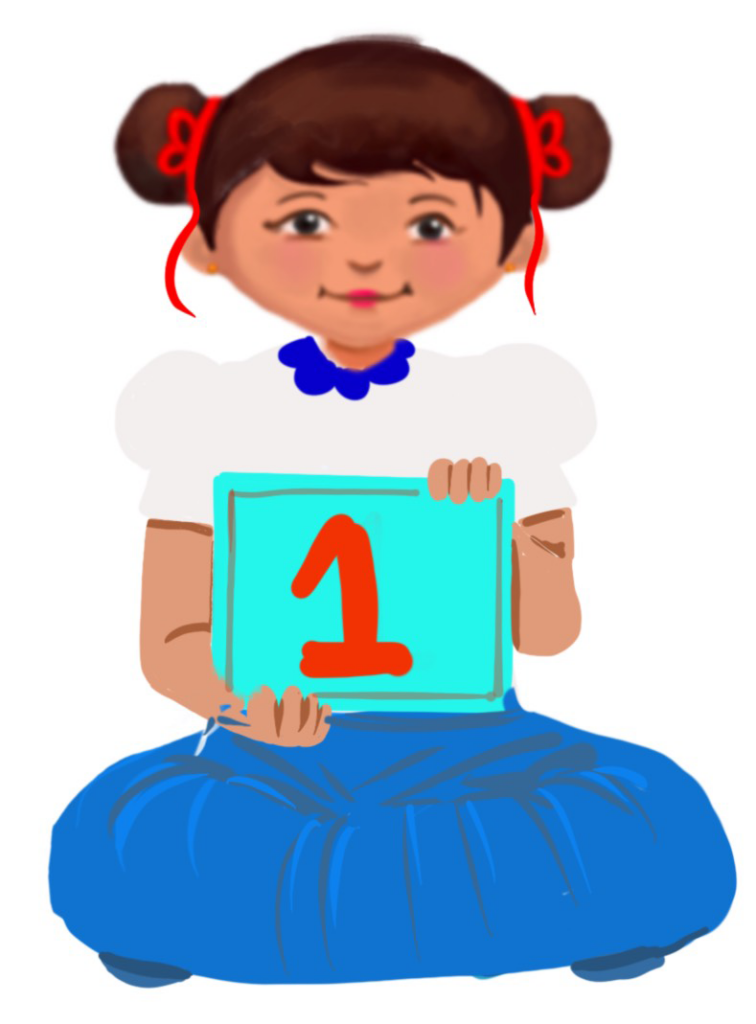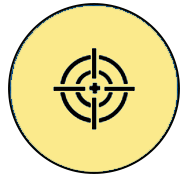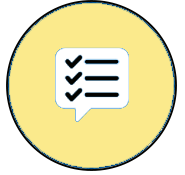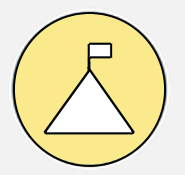
Machines Used in Everyday Life
Class 1
 Objective
Objective
Students will be able to
- identify different machines
- understand that machines are man-made things
- mention the uses of machines
- explain how machines work
- differentiate between manual and electronic machines
- explain the different characteristics and uses of computers.
 Prerequisites
Prerequisites
| Here are some prerequisite skills to assess child readiness: 1. Tolerance to sit 2. Basic reading and writing skills 3. Ability to follow instructions 4. Good hand-eye coordination 5. Fine motor skills 6. Gross motor skills 7. Identification of letters 8. Identification of numbers 9. Concept – Up/Down, Right/Left |
Worksheet: Colour letters by code
Worksheet: Left and Right Position
Video: Letter Recognition
Instructions to the Teacher:
Prepare a sheet displaying the 26 letters of the English alphabet. You can use cubes with individual letters printed on them(as shown in the video) or you can create individual letter cards by cutting them out from thick cardboard. As demonstrated in the video, the teacher will call out a letter name and the child has to identify and place the correct letter cube or card on the corresponding letter on the sheet.
Worksheet: Recognising Letters
 Goal
Goal
All
All children will identify the machines used in their homes or at school and mention the different uses of a computer.
Some
Some children will be able to recognise man-made things, identify a computer as a machine and specify the different uses of a computer.
Few
Few children will be able to give examples of some advanced machines other than those they come across in their daily lives.
Operational Definition
All – This gives the goal, which is the minimum that the teacher must achieve for all students in the classroom.
Some – This gives the goal that the teacher may try to achieve for some students in the classroom who can achieve the suggested goal over and above the goal stated for ‘All’.
Few – This gives the goal that the teacher may try to achieve for few students in the classroom who can achieve the suggested goal over and above the goal stated for ‘Some and ‘All’.
Materials Required:
Technology
- An audio-enabled computer with an internet connection, smartboard projector, and screen.
- All devices like laptops, tablets and desktop computers with accessibility features enabled.
- Screen readers like JAWS and NVDA.
- Large keyboards, built-in screen magnifiers, hearing aids, text-to-speech and speech-to-text software.
- Voice recognition software like Siri, Windows Speech Recognition, etc.
- Headsets
- Student writing or typing tools.
Teacher Materials
- Whiteboard and markers or blackboard and chalk.
- Pre-teach vocabulary cards, sight words, communication cards and worksheets.
- Lesson videos.
Student Handouts
- Handout 1: Communication Cards
- Handout 2: Vocabulary Cards
- Handout 4: Trace and Learn Card
- Handout 5: Yes or No Cards
- Handout 6: Thumbs Up and Down Card
- Handout 7: Worksheets
Print Preparation
The teacher will print, copy or laminate (wherever applicable):
- Communication Cards for students
- Trace and Learn Cards for students
- Vocabulary Cards for students
- Thumbs up and Thumbs down Card for students
- Yes or No Cards for students
- Pre-teach vocabulary cards, sight words cards
- Worksheets for students
Preparation of Activity:
- All the learning and teaching materials needed for this lesson plan must be ready before the lesson begins.
- Ensure that there are enough copies for all children. Multiple copies can be made by photocopying too.
- Please have the assistive technologies and accessibility features ready for your inclusive classroom.
Setup for transacting the lesson:
This topic must be taught in the classroom or a computer lab.
Instructions to the teacher:
- Begin the topic with a Pre-assessment worksheet and Pre-teach the vocabulary.
- Explain what is meant by a machine.
- Tell them about the different types of machines they see around them.
- Teach them the difference between manual and electronic machines.
- Ask the students to identify some machines used in their homes and help them ascertain whether they are manual or electronic.
- Introduce the concept of ‘Computer as a Machine’.
- Explain to the students how a computer is an electronic machine and enlighten them about its different uses.
- Help students think in an out-of-the-box manner by asking them to give examples.
- Encourage and appreciate the children for their answers.
1. Expected Prior Knowledge
Awareness of the extent of student’s prior knowledge of the topic will help the teacher plan and deliver the lesson appropriately.
This could be assessed through the provided Pre-assessment worksheet.
Worksheets, Vocabulary words
Worksheet: Pre-Assessment
Worksheet: Word-to-Word matching
LTM: Pre-teach Vocabulary with meaning
LTM: Pre-teach Vocabulary with pictures
2. Warm-up
1. Write the word ‘machine’ on the board.
What is the first thing that comes to your mind when thinking of the word ‘machine’?
Possible Answers: Washing machines, computers, sewing machines, refrigerators, calculators, fans, etc.
2. The machine used to make juice is…
Possible Answer: Blender
DIFFERENTIATION
- Students can write down answers in their notebooks or on a slip of paper and stick it on the corkboard.
- Students can choose to write their answers or communicate their responses verbally with a friend/teacher.
- Students can draw the word or point to the picture on the Communication Card (a Communication Card handout should be provided).
- The teacher should immediately praise the student with his/her name and reward the child.
Worksheets and Communication Cards:
Worksheet: Vocabulary
Worksheet: Trace and Learn
LTM: Thumbs Up and Down
LTM: Communication Card
LTM: Yes or No Cards
3. Wonder Machines
Machines are great; machines are swift,
Making work easy, like a magic gift
They wash our clothes and dry our hair,
Making life easy here and there.
From Choo Choo train to cars that race,
Machines help us go any place.
So let’s give a cheer, hip-hip-hooray!
For machines that help us every day!
Video: Wonder Machines
ISL Video: Wonder Machines
Poster: Wonder Machine A3
Poster: Wonder Machine A4
4. Machines
Machines make our work easy. They are man-made things.
Machines in our daily life and uses of machines:
Poster: Graphic organiser A3
Poster: Graphic organiser A4 Horizontal
Poster: Graphic organiser A4 Verticle
Guided watching
Bring the attention of the students to the screen and say, “Let’s watch this video.”
Ask students to give a ‘thumbs up’ whenever they hear and/or see the word ‘machine’ in the video.
Play video
Video: Machines used in Daily Life
ISL Video: Machines used in Daily Life
Informal Assessment (After Playing the Video)
1. Ask, “What is a machine?”
If needed prompt the children to come up with a definition using language from the video.
Example: The machine is a man-made thing. It makes our work easy.
Write the term and definition on the board after the students respond.
2. Ask, “Do you see a machine around you?” (The answer is yes)
3. Ask, “Do you have a machine in your house?” (The answer is yes)
Wordwall: Machine not a Machine
5. How Machines Work
Machines need energy to work. A computer is a machine that helps us carry out many activities.
Bring the attention of the students to the screen and say, “Let’s watch this video.”
Ask students to give a ‘thumbs up’ every time they hear and see the word energy in the video.
Play video
Video: How machines work
ISL Video: How machines work
Informal Assessment (After Playing the Videos)
1. Ask, “How do machines work?”
If needed prompt the children to come up with a definition using language from the video.
Write the question and definition on the board after student responses.
2. Ask, “Do you see a machine around you, that runs on electricity?” (The answer is yes)
3. Ask, “Do you know any machine that runs on battery?” (The answer is yes)
4. Ask, “Is a computer a machine?” (The answer is yes)
Worksheet: Informal Assessment
DIFFERENTIATION
Verbal response
Verbal response or hold up Yes or No card
Hold up or points to Yes or No card
Wordwall: How machines work
6. Adaptations and Modifications
7. Assessment
Try me: Simple machines in our day-to-day life, uses of machines
Try me: How machines work
Worksheet: Activity
Worksheet: Assessment
8. Assistive Technologies
Video: Assistive Technologies
Teacher Resource Document
| Source and Attribution of images: All images used in the above Assets and Aids are originally created. |
| This digital material has been developed by the Sri Sathya Sai Vidya Vahini Inclusive Education Project, a unit of Sri Sathya Sai Central Trust, Prasanthi Nilayam, as a collaborative offering in the service of our nation. |